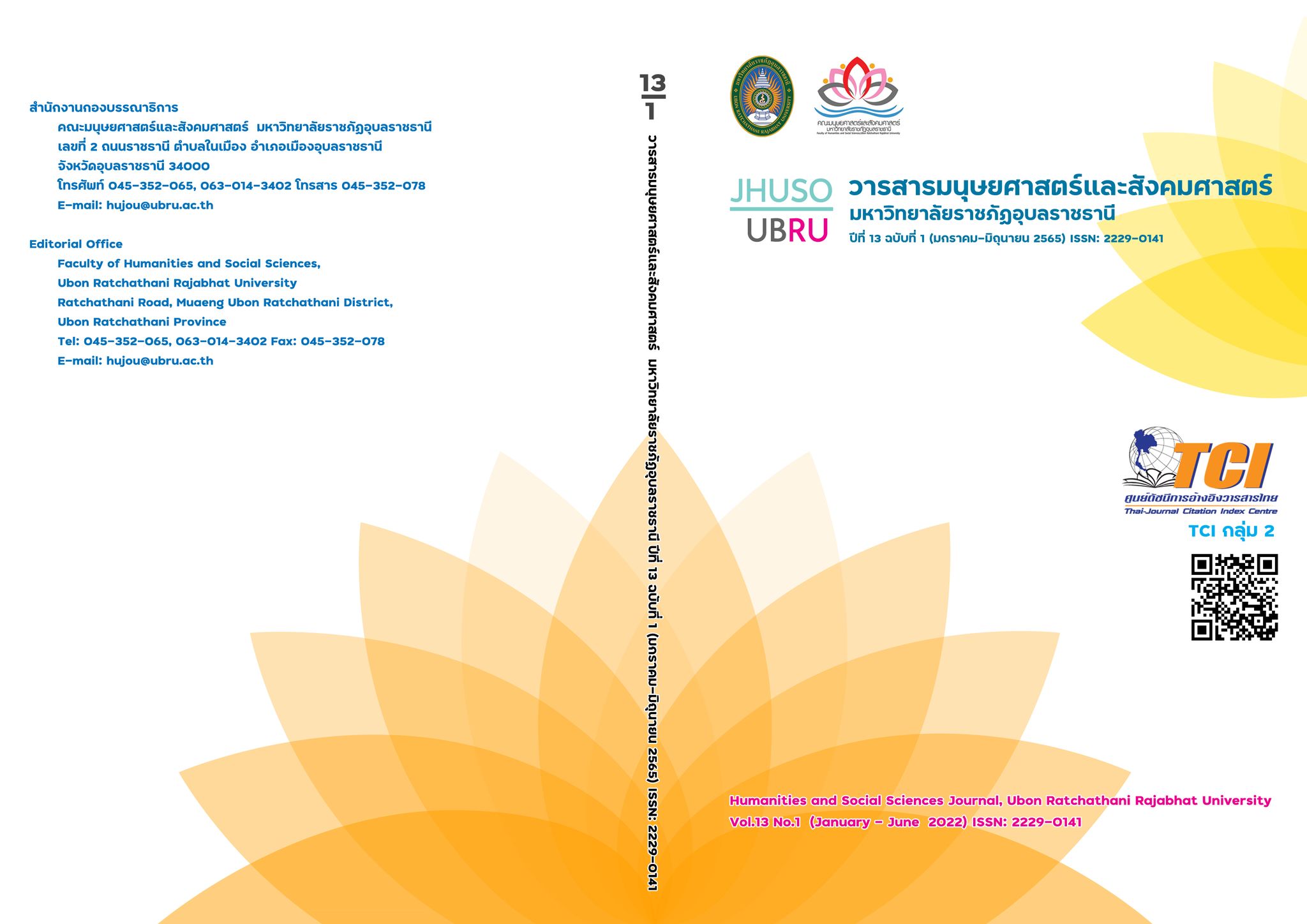การมีส่วนร่วมภาคประชาชนกับสถานะเสียงส่วนใหญ่และกลุ่มโต้แย้ง ในแบบจำลองสมการโครงสร้าง
Main Article Content
บทคัดย่อ
การกำหนดมิติความสัมพันธ์ การตั้งคำถามการวิจัยและการกำหนดสมมติฐาน เพื่อเป็นแนวทางวิจัยที่
เกี่ยวกับความครอบคลุมอย่างเท่าเทียมของกลุ่มผู้มีส่วนได้เสียตามกรอบการพัฒนาที่มาจากกระบวนการมีส่วน
ร่วมอย่างเป็นรูปธรรมการวิจัยนี้มีวัตถุประสงค์เพื่อแสดงความสัมพันธ์ สถานะเสียงส่วนใหญ่กลุ่มโต้แย้งและ
การเข้าร่วม ตามแนวคิดความเป็นประชาธิปไตยแบบพหุนิยมเพื่อการพัฒนาอย่างยั่งยืน โดยการศึกษาครั้งนี้
เน้นการทบทวนวรรณกรรม แนวคิด ทฤษฎีและงานวิจัยที่เกี่ยวข้อง เพื่อทดสอบทฤษฎีและความเชื่อมโยงของ
ปัจจัย ที่เป็นผลต่อการเข้าร่วมในการจัดทำผังเมืองรวมจังหวัดสุรินทร์ จากกลุ่มตัวอย่าง 435 คนโดยการสร้าง
ภาพของแบบจำลองสมการโครงสร้าง (structural equation model)
ผลการศึกษาพบว่า มีค่าความเชื่อมั่นด้วยวิธีของครอนบัคแอลฟ่าที่0.924 แสดงภาพแบบจำลอง
สมการโครงสร้าง โมเดลมีความสอดคล้องกับข้อมูลเชิงประจักษ์อยู่ในเกณฑ์ดี สอดคล้องกับตามแนวคิดของ
Hair et al. (1998;2006), Bollen (1989) และ Sorbon (1996) โมเดลมีความสอดคล้องกลมกลืนกับข้อมูล
เชิงประจักษ์ โดยมีค่า Chi – Square = 18.341 df = 11.0 Sig. = 0.074 >0.05 และ CMIN/df. = 1.667
<2.0 อธิบายว่า การลงมติตามเสียงส่วนใหญ่ มีอิทธิพลเชิงบวกต่อการเข้าร่วม มีค่าสัมประสิทธิ์อิทธิพลโดยรวม
0.57 มีอิทธิพลต่อการเปลี่ยนแปลงร้อยละ 75.0% มีอิทธิพลเชิงบวกต่อกลุ่มโต้แย้ง มีค่าสัมประสิทธิ์อิทธิพล
โดยรวม 0.34 มีอิทธิพลต่อการเปลี่ยนแปลงร้อยละ 88.0% และการลงมติตามกลุ่มโต้แย้ง มีอิทธิพลเชิงบวกต่อ
การเข้าร่วม มีค่าสัมประสิทธิ์อิทธิพลโดยรวม 0.70 โดยมีอิทธิพลต่อการเปลี่ยนแปลงร้อยละ 75.0% อย่างมี
นัยสำคัญทางสถิติที่ 0.001 มีความสัมพันธ์เชิงทฤษฎีซึ่งสรุปได้ว่าการกำหนดกรอบแนวคิดและออกแบบ
กระบวนการทำงาน ด้วยกรอบการทำงานการเข้าร่วมตามแนวคิดเสียงส่วนใหญ่และเสียงโต้แย้ง ที่เป็นความ
พยายามในมิติความเท่าเทียมทางสังคม ซึ่งเป็นส่วนหนึ่งของความเท่าเทียม ภายใต้กรอบการเข้าร่วมอย่างมี
ประสิทธิภาพเพื่อการพัฒนาอย่างยั่งยืน
Article Details

อนุญาตภายใต้เงื่อนไข Creative Commons Attribution-NonCommercial-NoDerivatives 4.0 International License.
เอกสารอ้างอิง
Arnstein, S. R. (1969). A ladder of citizen participation. Journal of the American Institute of
planners, 35(4), 216-224.
Berkley, G. E. (1975). The Craft of public Administration. Boston: Allyn and Bacon.
Dawkins, C. (2015). Agonistic pluralism and stakeholder engagement. Business Ethics
Quarterly, 25(1), 1-28.
Erman, E. (2009). What is wrong with agonistic pluralism? Reflections on conflict in
democratic theory. Philosophy & Social Criticism, 35(9), 1039-1062.
Erwin, W. (1976). Electoral Participation in a low Stimulus Election. Rural Development, 4(1),
-124.
Habermas, J. (1995). Reconciliation through the public use of reason: remarks on John
Rawls's political liberalism. The journal of philosophy, 92(3), 109-131.
Kenaphum, S. (2008). khwamsamret kho̜ng wisahakit chumchon nai si changwat chaidæn
lumnam khong [The success of community enterprises of four provinces in the
Mekong basin]. (Unpublished Doctoral thesis). Valaya Alongkorn Rajabhat University
under the Royal Patronage, Pathum Thani, Thailand.
Marx, K., & Engels, F. (1848). The Communist Manifesto. Retrieved 2 April 2018, from
http://public.wsu.edu/brians/world_civ/worldcivreader/world_civ_reader_2/marx.ht
ml.
Mouffe, C. (1997). Deliberative democracy or agonistic pluralism. Political Science Series, 72,
-17.
Niyomtrong, D. (2017). næokhit thritsadi læ phatthanakan kanwangphæn phak chak yuk
rœmton kan ruam klum su yuk lang fưnfu phak niyom mai [Concept, theory and
development of sector planning; From the era of the beginning of integration to
the post-revival era of the new popular sector], Urban and Regional Planning
Academic, 2(1), 36-45
Niyomtrong, D. (2019 a). Urban Futures: Critical Transformation in Asian City. VietnameseGerman University, Binh Duong, Vietnam.
Niyomtrong, D. (2019 b). kanwangphæn siang toyæng kho̜ng klum phu mi suan daisia phưa
kanphatthana yang yangyưn ko̜rani sưksa kanchat tham phangmưang ruam
changwat Surin [Controversial Planning of Stakeholders for Sustainable
Development: A Case Study of City Planning of Surin Province]. (Unpublished
Doctoral thesis). Khon Kaen University, Khon Kaen, Thailand.
Putti, J. M. (1987). Work values and organizational commitment: A study in the Asian
context. Human Relation, 42(3), 275-288.
Roskamm, N. (2015). On the other side of “agonism”:“The enemy,” the “outside,” and the
role of antagonism. Planning Theory, 14(4), 384-403.
Ruangwasilp, S. (2007). kanmi suanruam kho̜ng chumchon nai kanchatkan sưksa nai phưnthi
kan bo̜rikan kho̜ng rongrian lo̜m rætwitthaya amphœ thœn changwat lam pang
[Community participation in educational management in the service area of
Lomrad Wittaya School, Thoen District, Lampang Province]. (Unpublished Master's
thesis). Chiang Mai University, Chiang Mai, Thailand.
Sorbon, D. (1996). LISREL 8: User's Reference Guide. Chicago: Scientific Software
International


